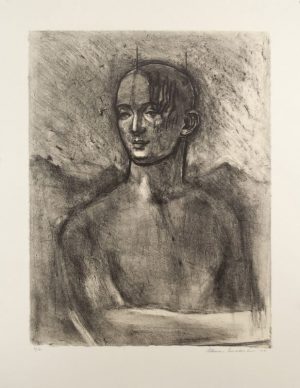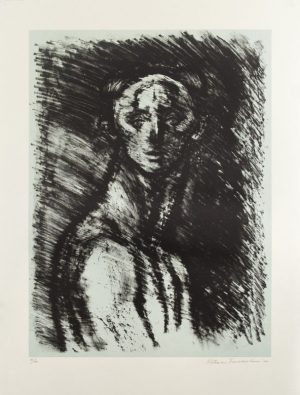Meet a far-sighted person. He walks on narrow city streets but what he sees is the vast space between mountain peaks. Does he see a great bird spreading its wings, or a dark forest in the distance? Perhaps he’s looking at that part of himself that lies farther away than anything else in this world. Indeed, it seems to me that one cannot see farther than inside onself.
Maybe that’s why I sense a certain kinship between the eyes of desert nomads and fisherman and the eyes of philosophers. People with such eyes are rare, but they can be found in all walks of life. WIthout warning, they pass before me. I cannot call to them – I can only struggle to see them and hear their softly spoken words. To me, their gestures and their eyes somehow embody the humanity in all of us.
Some people say that in knowing oneself one may know the world….If I am able to see the world clearly by looking within myself, then I can make a statement concerning human existence through the depiction of a single person. Because I feel this way, I shall continue to work with the human form.
–Katsura Funakoshi


